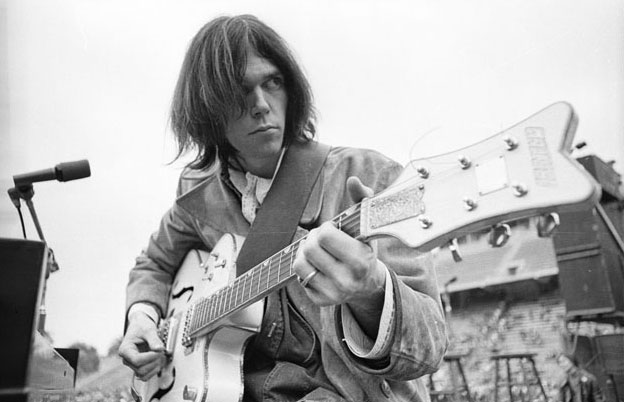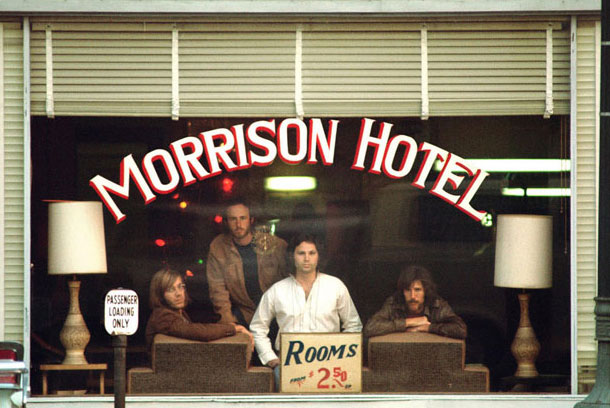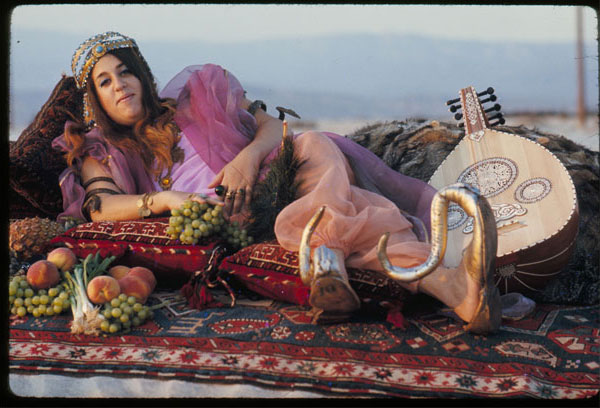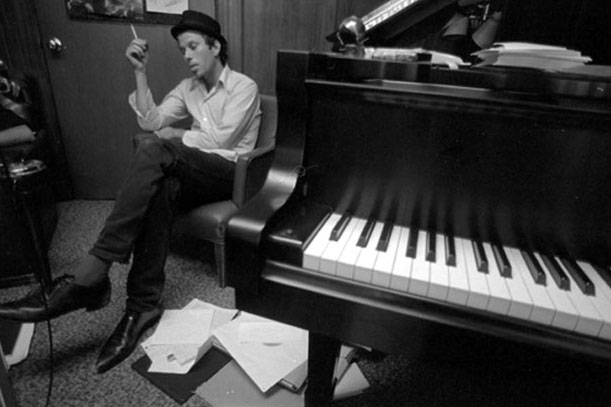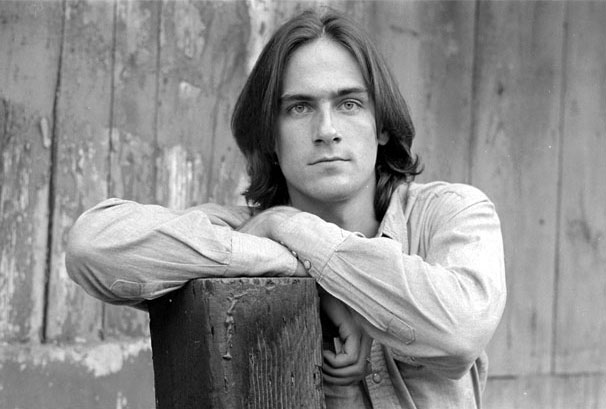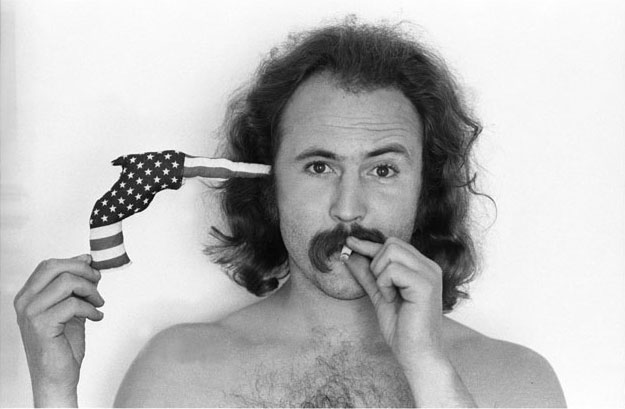|
From PHOTOWORKSHOP.COM Photos to Inspire
During the '60s and '70s, Henry Diltz has photographed some of the top names in the music industry. His subjects include such legends as The Doors, James Tayor, Joni Mitchell, Crosby, Stills, Nash & Young, writer Truman Capote, and actor Arnold Schwarzenegger. He once worked for Bravo, a German magazine, and Corbis markets many of his images as stock. Because his father was in the State Department, he states, "I grew up all over the place--I lived in Tokyo, Bangkok, and Munich, Germany." Diltz claims that he loves the "diversity of life on the planet," and became a photographer partly because of his love of people. "The first step in my becoming a photographer was to become a musician," explains Henry Diltz. In the early '60s, he performed in a folk quartet with whom he toured the country and recorded several albums. "On one of our last tours, the whole group bought funky little cameras in a second-hand store in Michigan. We had a motor home, and for the next couple of weeks, we did a photo 'shootout.'" After the group got back to L.A., they put on a big slide show for their friends. He recalls, "It was like magic to see these images up on the wall; a huge awakening." Diltz quickly set about photographing his friends, which taught him how to be a portrait and documentary photographer. And because so many of his friends were musicians, Stephen Stills, David Crosby and Mama Cass--and groups like Buffalo Springfield and Lovin' Spoonful--were among his first subjects. He shot a lot of film of these rising stars of the '60s, "And then they started finding uses for those pictures," he says.
"It kind of came naturally," he says of his photographic ability. "I never studied photography; I just learned what the little numbers meant. There isn't much to learn really, once you find out how to set an f-stop and shutter speed. The rest is about what you see, and when you choose to push the button." Diltz made his slideshows increasingly more entertaining by capturing new angles, interesting subjects, and poignant moments. "There's something about a slide show that has a lot of impact. It's possible to move people; to get a reaction from them," he says. "If I had started out shooting black-and-white or color print film, I may never have become a photographer." He points out that it's been exactly 40 years since his first slide show in 1966. "I still shoot transparencies with a thought as to how it will look in a slide show," he comments. "I have different friends that I show them to, and sometimes I show slides at a gallery opening or presentation." Although he still shoots film, he says, "I have one foot in the digital world, but for my own purposes, you can't beat transparencies." Nonetheless, he finds that there are times when digital imaging comes in handy. In the old days, when he sent transparencies to some clients, he recalls, "you'd get about 80% of them back, but there were always some that got lost. Nowadays, you send out a CD, but you get to keep everything as well."
Diltz's business is divided into three facets: "One, I'm shooting pictures of new music groups," which is what he's been doing for years, beginning with the first album covers for Jackson Browne, Crosby, Stills & Nash, and The Eagles. Secondly, he's selling his images that he shot during the '60s and '70s for use in magazines, books and on television. And finally, he shows his work and other photographers' images at several galleries that he co-owns. He says this evolved after his years of making a living at photography. "People told me, 'you must have quite an archive,' and I said that actually, I had boxes full of pictures." Once he organized and categorized these photographs, he discovered that he did indeed have a huge archive of images that captured a certain period of time in L.A., "a sort of singer/songwriter renaissance that went on during the '60s and '70s." Diltz eventually met someone who produced gallery shows for the John Lennon Estate. "He showed John Lennon's lithographs around the country, and said, 'I'd love to try to do this with your photographs.'" Thus, in the late '90s, Diltz and his partner spent a year traveling to a different city each
month, putting on a show of Diltz's images in a prominent hotel or shopping center. "Finally we wound up doing one in New York, and when the show was over, we had rented a little storefront in Soho that was available for lease." He and his partner asked the landlord whether they could keep the photos at the store until the space was rented, and paid a little money each week. "That went on for about four years; we'd find a space for about a year and then they would lease it, and we'd find another space. Finally we wound up getting our own permanent gallery in Soho." After six years, they opened another location in La Jolla, California, and have recently opened one in Los Angeles. In the beginning, Diltz showed his work exclusively. Then they asked another renowned music photographer and friend, Jim Marshall to have a showing, "and one by one, more photographers said they wanted to be in our gallery." Today, they represent "the fine art music photography" of 25 different photographers in their Morrison Hotel galleries. The inspiration for this name began one day at their N.Y. gallery, when Diltz showed the image from the Doors' album cover (which he had photographed) in the window. "I was across the street, looking at our gallery with this photograph at the bottom of this big, bare window, and I thought, 'wouldn't it be great to put that lettering on our window to echo this image in the window.' It just looked like it belonged there." It caught on, and they researched the copyright and found they could use the name permanently.
During the 1960s, Diltz' first camera was called a "Pony." He says, "It was a little second-hand camera that was broken and chewed up the sprockets on the bottom." He soon moved on to a Pentax SLR, and owned three of them until they got stolen. Then he switched to the Nikon F series. "I was hard on equipment in those days, and the Nikon F was like a tank." He still owns a Nikon FM2 and uses a one-degree Minolta Spotmeter to read light accurately, instead of relying on TTL metering. As for lighting, he says, "When I used to shoot parties during the '80s for record companies, I used a Vivitar flash unit," although he uses mostly available light. He shoots publicity photos and CD covers for musicians using both his Nikon FM2 SLR and his Canon EOS 20D. Diltz owns manual cameras with fixed focal-length lenses ranging from 24mm to 180mm, but with the advent of digital imaging, he also uses 16-35mm and 70-200mm zooms. He also enjoys his compact Canon 630 PowerShot, which has a huge viewing screen on the back. "It's about the size of a pack of cigarettes, close-focusing and will operate in low light," he explains. "It's like a little pocket recording device."
Diltz describes himself as "a kind of hunter of images." He enjoys taking pictures of a wide variety of subjects at friend's houses, in restaurants, and generally wherever he goes. "It's my scrapbook of things I saw during the day that really appeal to me." He has never been interested in using a darkroom, making his own prints, or working on a computer. "I prefer to take pictures, and have somebody else do the technical end of it," he says. "I have an assistant who scans and emails images for me." Diltz says that he loves composition and to "frame" the world around him. "I've always been very interested in people," he adds. "Photography is a passport into people's lives. It allows you to hang out and observe them." He's currently working on several books of his photography. "After 40 years of shooting these images, I'd like to share them in some way besides doing slide shows for my friends," he chuckles. His current book projects will feature his classic images of musicians, but he says he also wants to do a book on everything that he's photographed. "Now is a time to sift through it all. Being a photographer comes in handy when looking back on your life," he concludes. Visit Henry Diltz' web site. © Copyright by PHOTOWORKSHOP.COM |
